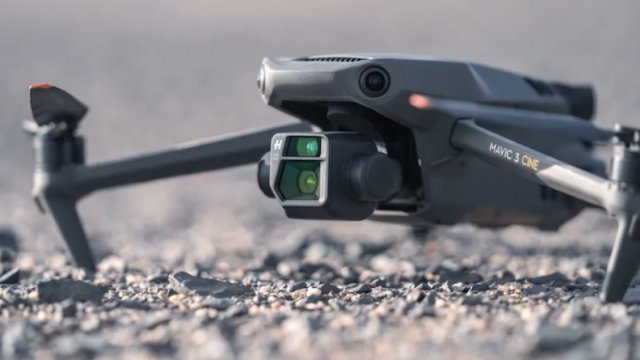One of the most anticipated versions of drones is finally available. There are already two. Today DJI has already released the Mavic 3 and Mavic 3 Cine.
The $4,999 Mavic 3 Cine model is capable of shooting Apple ProRes 422 HQ footage at 5.1K at up to 50fps and has a built-in, but non-user-replaceable, 1TB hard drive.
The cheaper $2,199 Mavic 3 doesn’t come with ProRes or an integrated SSD, but it does share the same dual-camera system backed by a 4/3 CMOS sensor. Both drones are capable of 4K shooting at up to 120fps and 20MP photos. In addition to the 24mm main lens, there is also a hybrid zoom lens capable of 28x digital zoom. In terms of focal length, this equates to 162mm at f/4.4.
The batteries on both planes are rated for 46 minutes of flight time, which is a significant upgrade over the Mavic 2’s 31-minute battery life and up to the Mavic Air 2s and 2S, which can fly for 34 and 31 minutes on a single charge, respectively.
The two drones are the successors to DJI’s Mavic 2 Pro and Mavic 2 Zoom released in 2018, which also introduced the first Hasselblad camera for use in DJI drones after acquiring a majority stake in that company in 2017. But since 2018 we’ve seen Much of the Hasselblad brand is in DJI products, even today. And just like in 2018, DJI includes the Hasselblad Natural Color Solution, which promises incredibly natural colors straight from the camera.
But if you don’t want the built-in color profile, the Mavic 3 is also capable of shooting 10-bit D-log footage for more color control in post-processing. Besides ProRes encoding, everything can be filmed using standard H.264 and H.265 profiles, but there is no HDR video on this drone.
In addition to all the camera improvements, DJI has also updated its standalone features for the Mavic 3.
Just like its predecessor, the Mavic 3 also shares omnidirectional obstacle detection, except that sensors are now able to detect objects even from 200 meters (650 feet) away, up from 20 meters (65 feet) previously.
But this additional extension allows for some new improvements: Advanced RTH (Homecoming), APAS 5.0 and ActiveTrack 5.0. Advanced RTH helps the drone plan a smarter route back to the launch site. And APAS 5.0 does just that, except when you’re the one maneuvering the drone. ActiveTrack 5.0, which will not be available at the time of release, promises a significant improvement in tracking and following topics. Like being able to fly in any direction while following a subject and making use of the visible sensors on the camera body to keep tracking subjects if they get out of frame.
Both aircraft are also equipped with updated versions of DJI’s proprietary transmission technology, OcuSync 3+, which promises a range of 15km (under ideal conditions) and 1080p at 60fps for direct transmission to your smartphone or console.
If you are interested in purchasing this drone, there are three packages to choose from. The Standard Edition, which includes the drone, shoulder strap, remote control, charger, set of extra propellers, and joystick, will cost $2,199.
The Fly More Combo adds two extra batteries, a charging hub, four sets of propellers, a carrying case that also converts into a backpack, and a set of ND filters (ND4, ND8, ND16 and ND32). Fly More Combo will cost $2,999.
The final package is the Cine Premium Combo, which includes all the accessories that come with it, including the all-new DJI RC Pro. This is a remote control similar to the DJI Smart Controller that has a built-in bright screen. The Cine Premium Kit also includes an extra set of ND filters (ND64, ND128, ND256, and ND512) that you won’t find in the Fly More Combo. As mentioned, the Cine Premium Combo package will cost $4,999. All three packages are available for pre-order starting today.

“Web fanatic. Travel scholar. Certified music evangelist. Coffee expert. Unapologetic internet guru. Beer nerd.”





